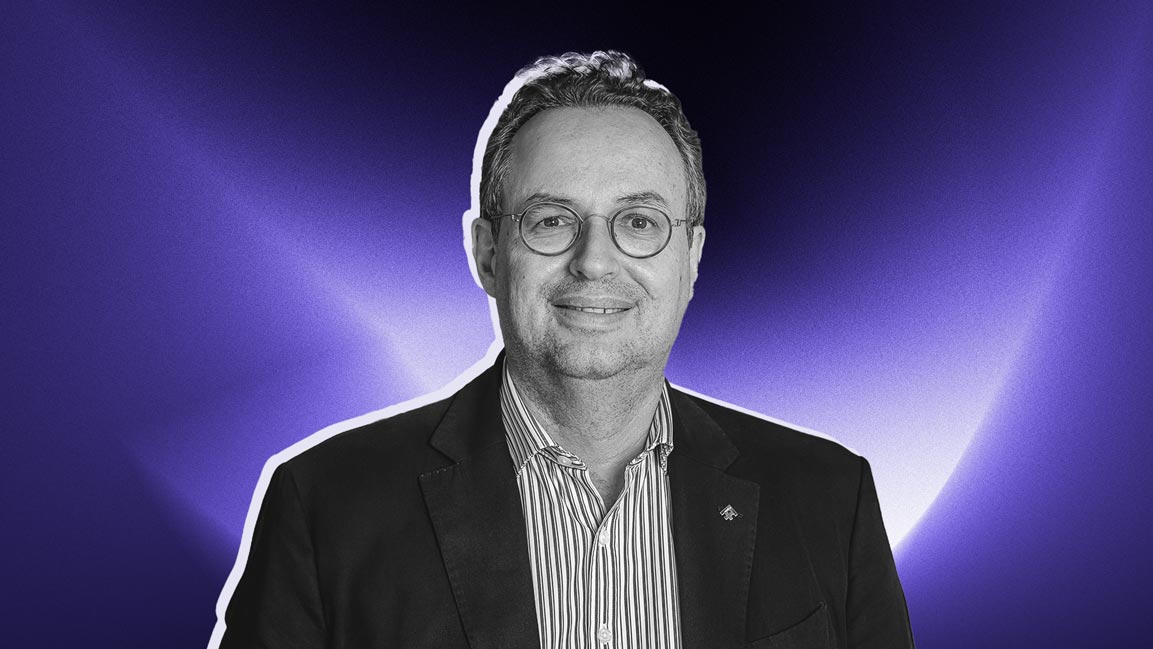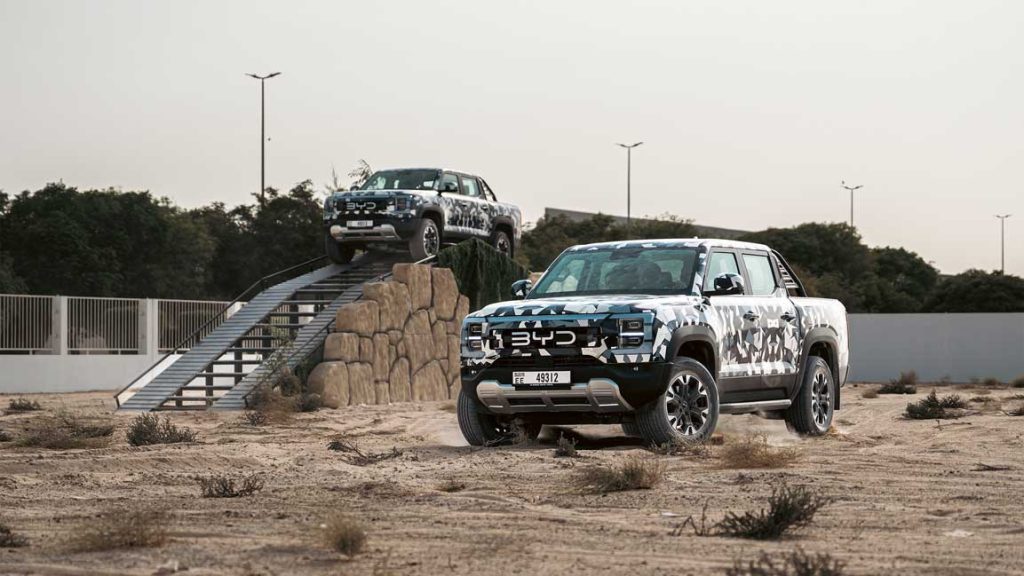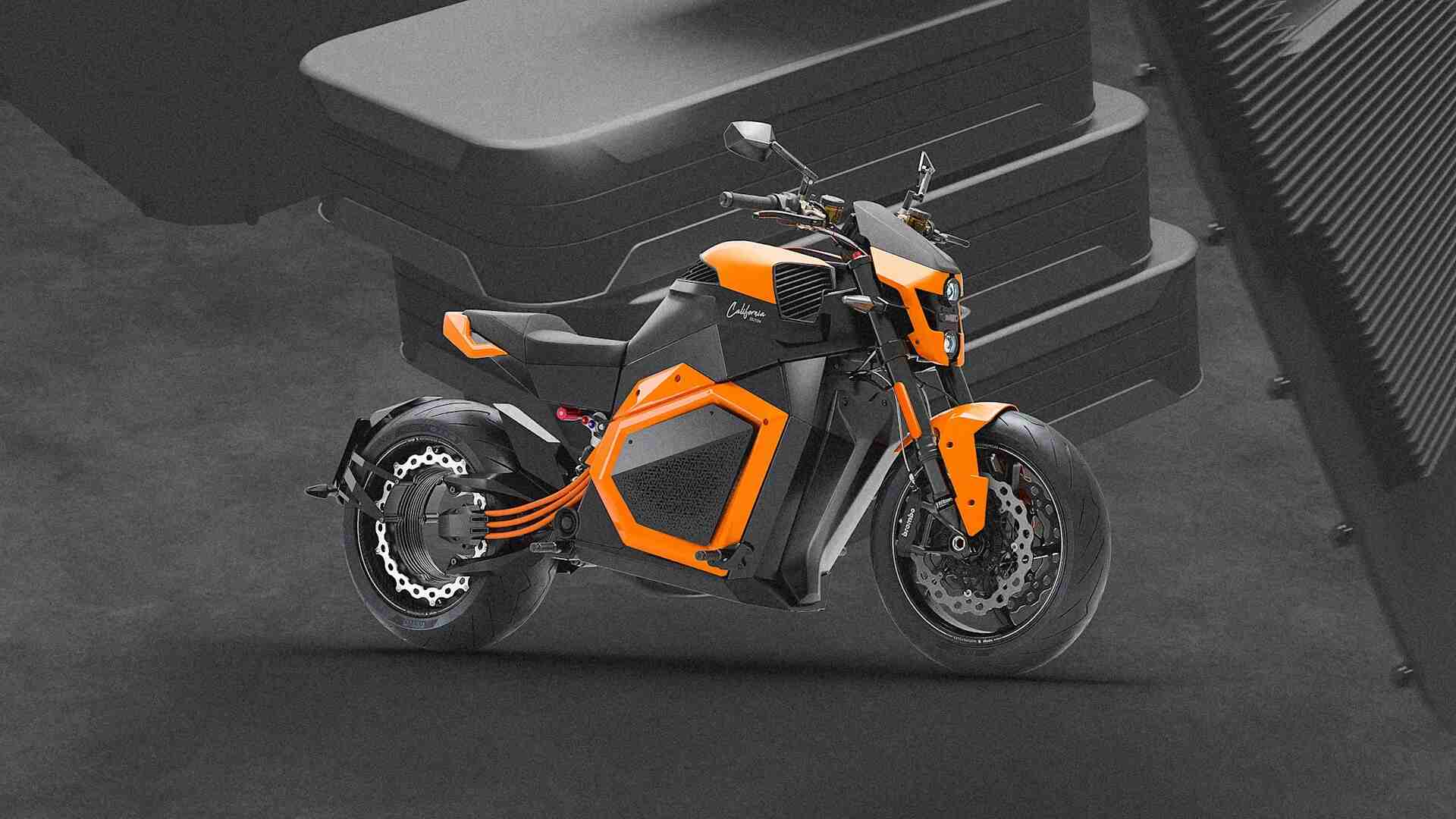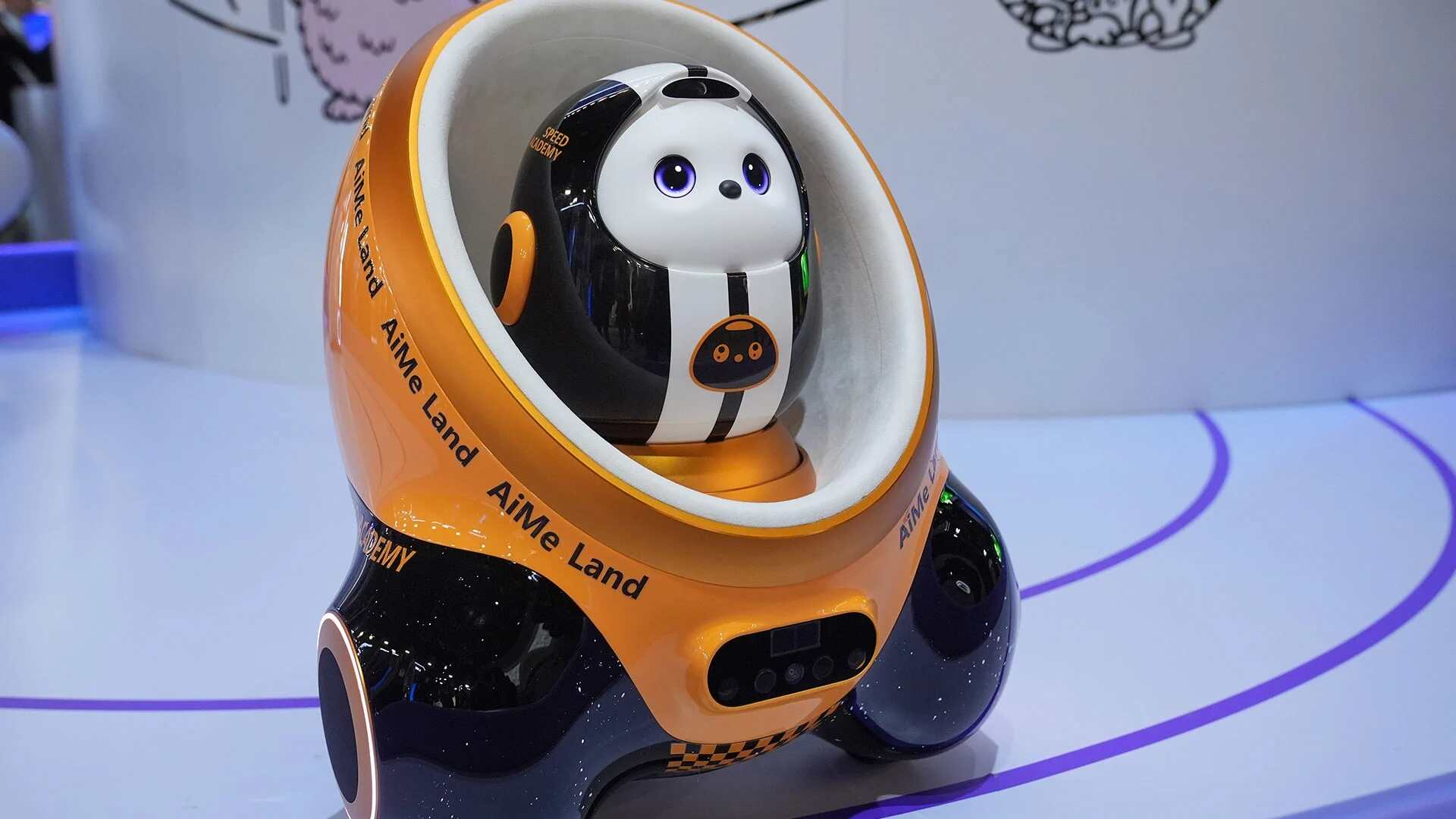- | 10:00 am
Is BYD’s Super Hybrid solution the bridge to the Middle East’s EV transition?
The automaker’s hybrid-first approach reflects a pragmatic step toward clean mobility in a region where all-electric faces big hurdles.

Powerful pickups, backed by a loyal following that values them as both practical and aspirational, dominate the roads in a region where triple-digit temperatures define the climate.
The shift toward electric mobility, however, faces many challenges. Lucas Bellieud, Managing Director of Al-Futtaim Electric Mobility in the UAE, believes BYD has found the right balance for a transitional path to a fully electric future. It is not fully electric. It is hybrid, more precisely, super hybrid.
“We’re not just spectators in the EV movement,” Bellieud tells us, on the sidelines of BYD’s Super Hybrid Day. “We want to be actors, key players, in the region’s transition to sustainable mobility.”
At the heart of this strategy is BYD’s upcoming Shark 6, a plug-in hybrid pickup built on the brand-new DMO platform. Short for Dual Mode Off-road, the platform is engineered for rugged 4×4 performance and utility.
Why hybrids, and why now? “We think this is the best fit for the usage we have here in the region,” Bellieud says.“Pickups here serve various needs, from leisure to heavy-duty, even city driving. The DMO platform was engineered to deliver on that versatility.”
According to Bellieud, the Shark 6 will offer up to 100 km of full EV driving, after which it shifts into internal combustion mode for longer journeys. “If you recharge regularly, you’ll drive in EV mode for most of your trips. But you’re never limited, you have the autonomy of a conventional engine when needed.”
WHAT IS A SUPER HYBRID?
Bellieud explains why the Shark 6 will be classified as a “Super Hybrid.” When asked what sets it apart, he adds, “It’s a robust, beautiful, and efficient hybrid.”
A Super Hybrid represents a new generation of plug-in hybrid vehicles, combining the efficiency of an electric car with the range and flexibility of a traditional engine. Unlike standard hybrids, which rely mainly on the engine with limited electric support, Super Hybrids offer extended all-electric driving, in BYD’s case up to 100 kilometers, before switching seamlessly to fuel power for longer journeys.
The concept is simple. Consumers enjoy the benefits of an electric vehicle for most daily trips while retaining the confidence of a conventional engine when distance, terrain, or limited charging infrastructure make full electrification challenging.
“You get the best of both worlds. It’s a real EV if you’re using it under 100 kilometres. But then you also have state-of-the-art hybrid performance beyond that. It’s not a compromise; it’s an upgrade.”
Under the hood, the Shark 6 features what Bellieud calls “the best of BYD’s battery, electric engine, and chassis design.” That includes tech developed far beyond the automotive sector, given BYD’s roots in advanced battery and electronics engineering.

Shark 6, soon to be released in the Middle East market. Courtesy: Al Futtaim/ BYD
Concerns about battery performance in extreme heat are valid and common in the Middle East. “We’ve done extensive testing in Middle East conditions. Our products are Middle East-proof. That means they’ve been validated for this region’s high temperatures and unique driving patterns.”
While many in the sustainability space push for an all-electric future, Bellieud does not see EV and hybrid technologies as opposing forces. He views them instead as complementary tools within a much larger toolbox.
“There’s no good or bad technology,” he says. “There’s only technology that fits the needs of a particular customer. And our job at BYD is to provide the widest possible range of solutions to meet those needs.”
To those who argue that hybrids slow down full electrification, Bellieud says, “I don’t like to talk too much; I prefer to act.” “Our focus is not on debating what’s best, but on bringing more customers into the movement. That’s how we move forward – together.”
Beyond the cars themselves, Al-Futtaim and BYD are looking to play a significant role in charging infrastructure across the region. “Through our company’s Charge2MOOV solution, we’re already deploying charging solutions for B2B clients,” Bellieud says. “And soon, we’ll be scaling to B2C as well.”
This includes partnering with governments and energy providers to help build the ecosystem needed for widespread adoption in the UAE and across the GCC.
As for growth in the region, Bellieud is positive. “We’ve already sold over 7,000 BYD vehicles in the UAE, and that number is set to grow,” he says. “We’re seeing more people in showrooms, more online engagement, more curiosity. There’s momentum, and it’s accelerating.”
So where does the region stand on the road to an all-electric future? According to Bellieud, mobility’s future can include electric and hybrid vehicles.
“It depends on the need,” he adds. “Our job is to make sure that, whatever the need is, we have the solution.”
While much of the EV world races toward an all-electric future, BYD’s focus on the Shark 6 hybrid reflects a more nuanced and regionally tailored approach. In the Middle East, BYD’s Super Hybrid solution could be the bridge consumers need to step into a more sustainable future.







































